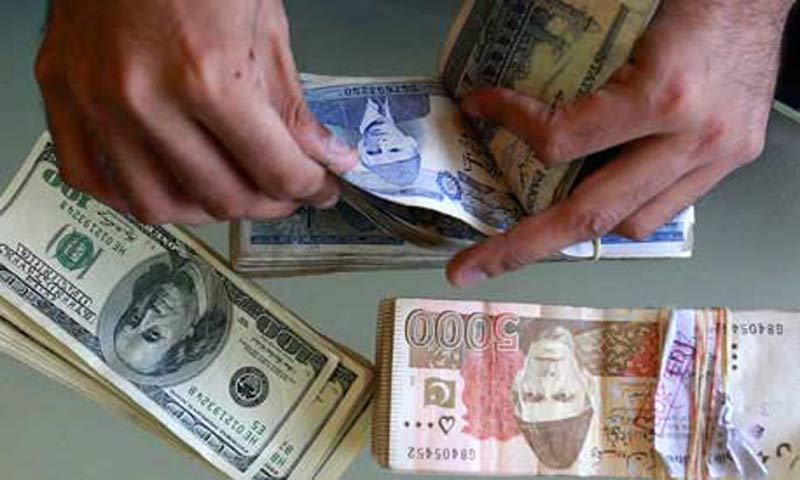The Economic Crisis In Pakistan
The economic crisis in Pakistan

NEW DELHI: The IMF has approved a loan tranche worth over $ 506 million to cash-strapped Pakistan as part of a three year bailout programme. n September 2013, the IMF had approved a three-year Extended Fund Facility amounting to $ 6.6 billion, of which it has made available $ 4.1 billion since September 2013.
With this newest installment, the focus seems to be shifting to critical structural reforms from quantitative targets. Pakistan has met all its targets for January-March period as per this seventh review, which like the sixth review enabled the country to not require any waiver from the executive board. The first five reviews, however, provided ten waivers to keep the bailout programme on track.
The current economic crisis in Pakistan
IMF (2012) figures state that the real GDP growth in Pakistan over the past four years has averaged only about 3 percent annually and was projected to be about 3.25 percent in 2012/13. This is a sharp decline in growth given the 6 percent growth rate in 2007 (Peiris 2008). Additionally, Pakistan’s external position has weakened substantially, as export growth turned negative in 2011/12 while imports grew and the country’s financial account deteriorated reflecting weak financial inflows and debt repayments. The fiscal deficit (excluding grants) reached 8.5 percent of GDP in 2011/12, well above the original budget target of 4 percent, reflecting both revenue and expenditure slippages, including higher subsidies (IMF 2012). There has been a swift depletion of foreign exchange reserves, which have fallen to $6 billion from around $7.2 billion in March 2013 (The Nation, 2013).
In April 2013, an interim government headed by Prime Minister Hazar Khan Khuso put together a delegation to participate in the annual meetings of the IMF/World Bank so as to negotiate an emergency loan of between $5 billion and $8 billion (Peiris 2013). The negotiation of such a loan was initially committed to in official statements by Nawaz Sharif (RTE 2013 – old) given widespread fears of an imminent current accounts crisis, further rapid depreciation of the Pakistani rupee and soaring interest rates. Pakistan’s current reserves of around $6 billion are equivalent to only two months of imports.
The crisis is compounded by the fact that Pakistan has to make debt repayments to the IMF on previous loans. In 2008, the IMF had approved a $7.6 billion loan when Pakistan’s foreign currency reserves fell to $3.5 billion (Bokhari 2013). Pakistan will require a loan of $6 billion to $9 billion to avoid a balance of payments crisis, according to the Asian Development Bank (ADB 2013).
Energy sector
Pakistan suffers from a chronic energy crisis, resulting possibly because of industrial growth outstripping the pace of growth in generation, a badly maintained distribution system, ineffectively targeted energy subsidies, and defaults on bill payments. In summer 2012, the country’s electricity shortfall was 8500 MW – about 40 percent of the country’s total generation capacity, discounting transmission losses (Hashim 2013).
The energy sector is of relevance to addressing the economic crisis as it directly affects all the sectors that contribute to the GDP growth rate. According to Pakistan Business Council Chairman, Sikandar Mustafa Khan, the energy crisis has retarded Pakistan’s GDP growth rate by three to four percent and additionally deterred substantial local and foreign investments (The Nation 2013).
The IMF wants Pakistan to reduce its fiscal deficit by cutting energy subsidies that consume 2 percent of GDP per year. Pakistan sells its power for 9 rupees per unit whereas the cost of production is at 12 rupees (Houreld 2013). However, the removal of energy subsidies could disproportionately affect the poor unless they are accompanied by energy sector restructuring and reform, which the IMF does not clearly spell out.
Tax Base
Roughly, only 1 percent of the country’s population pays income tax (Hashim 2013). Pakistan’s tax to GDP ratio after 64 years is below 10 % of GDP, amongst the lowest in the world (Ahmed 2012). The IMF wants Pakistan to broaden its tax base; this move has been committed to by the PML-N (PML-N 2013) in its manifesto where it states that it will collect agricultural taxes that provinces have largely ignored. This move could bring strong opposition from the powerful landowners, many of whom constitute the PML-N primary vote base. The fact that the collection of the agricultural taxes will be difficult is further corroborated by the absent articulation of a practical method to organize and implement this collection. Further, tax on agriculture should be structured so that a majority falls on the rich landowners and not the small producers, which the IMF does not clearly spell out.
Foreign Capital
Foreign investment is considered beneficial to the economic progress of developing countries as it can be used to finance the gap between savings and investment, resulting in technology transfer, job creation, productivity increase, and competition enhancement (Kobrin 2005, Le and Ataullah 2006, Thomas et al 2008 – in Saqib etc). However, many studies that have examined the impact of FDI on growth point to a reverse trend. In conjunction with this reversal, dependency theory argues that FDI creates monopolies in the industrial sector, which consequently results in under-utilization of domestic resources (Adams 2009 – in Saqib etc). A study by Saqib, Masnoon and Rafique (2013) concludes that Pakistan’s economic performance is negatively affected by FDI whereas its domestic investment has benefited its economy. The study notes that most of the benefits of FDI get diluted by the repatriation of profits to the investor nation, explained by the limited capacity of the host country to absorb the transfer of knowledge and technology for further development.
The conditions of an IMF loan will facilitate FDI in Pakistan’s economy, which may follow the logic of the dependency theory and could negatively influence Pakistan’s economic development.



